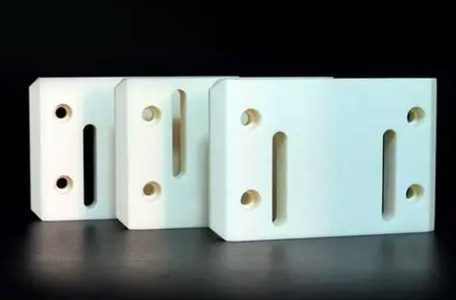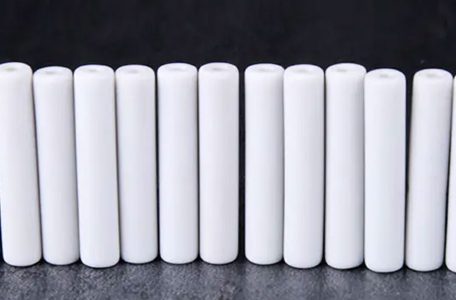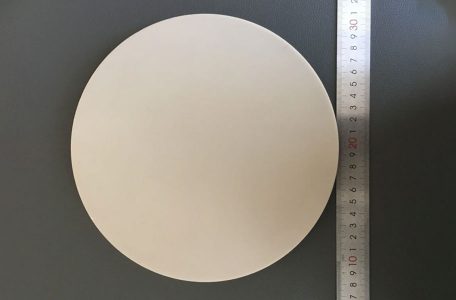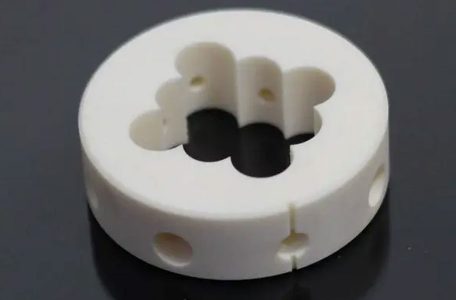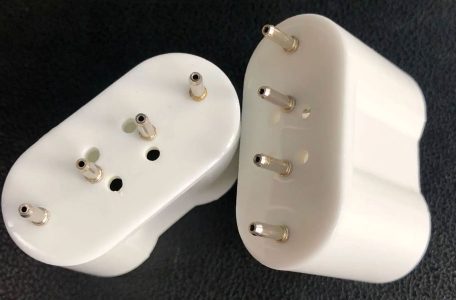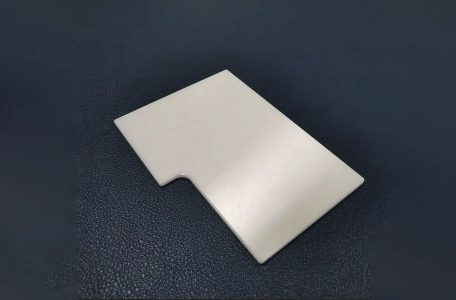Sheet forming also belongs to plastic forming. The prepared billet is mixed with a certain amount of organic plasticizer to make it plastic. Plasticizers are prepared from adhesives, plasticizers, solvents, defoamers, etc. Adhesives are required to have sufficient adhesive force, good film-forming properties (good ductility and toughness), and have the characteristics of less ash after burning and non-toxicity. The role of the plasticizer is to insert between the segments of the polymer compound, weaken the attraction between each other, and prevent the adhesive from elastic shrinkage and rupture after being deformed by force, thereby improving the plasticity of the blank. The main function of the solvent is to dissolve the Read more
With the advancement of modern technology, ceramic nozzles are more and more widely used, and they have been continuously improved and updated. The following is introduced by Pintejin Ceramics. Zirconia ceramic machining nozzles We refer to the following types of ceramic nozzles in China: 1. Oxide ceramic nozzles (referring to alumina and zirconia materials) 2. Nitride ceramic nozzles (referring to silicon nitride combined with silicon carbide materials) 3. Silicon carbide ceramic nozzles (referring to silicon carbide, boron carbide materials) However, because the performance of oxide ceramic nozzles is not as good as that of silicon nitride nozzles and silicon carbide nozzles, they have been gradually eliminated. Ceramic nozzles are wear-resistant Read more
The properties of zirconia ceramic powder are very important to the quality of the advanced ceramics. The “quality” here not only refers to the excellent performance and repeatability of the product, but also includes the excellent process performance and stability. In order to achieve this ideal state. Advanced ceramic powder should have the following characteristics. (1) Precise chemical composition Accurate chemical composition is a basic requirement, because for advanced ceramics. Different chemical compositions directly determine the phase and phase of the produced crystals. Bianeng, if the chemical composition deviates, the result will be unrecognizable. Such as PZT piezoelectric ceramics. When Zr:Ti=52:48, it is the phase boundary between the trigonal phase Read more
Structural ceramics refer to ceramics used in various industrial sectors to manufacture mechanical equipment and machining tools. Functional ceramics are a kind of spiritual material. So what are the industrial applications of structural ceramics? Next, Pintejin ceramics will introduce to you a bit. Structural, also known as engineering ceramics, precision ceramics, has superior wear resistance and corrosion resistance compared with traditional structural ceramics. Structural ceramics are known oxide ceramics with the best comprehensive properties of strength and toughness due to their phase transformation toughening properties. Widely used in injection molding ceramic parts, dispensing ceramic accessories, ceramic sleeves, ceramic seals, medical food ceramics, electronic and electrical ceramics, mining equipment and other Read more
Industrial ceramic mechanical parts are widely used in various industries now, and their excellent performance makes them replace traditional materials. The following Pintejin zirconia ceramic machining manufacturers will tell you about the performance and main uses of industrial ceramic mechanical parts. As an inorganic non-metallic material, special ceramic materials for industrial ceramics and mechanical parts have many properties that metal materials do not have, such as: high strength, high hardness, high elastic modulus, high temperature resistance, wear resistance, corrosion resistance, oxidation resistance , Thermal shock resistance. In addition, the current ceramic molding process is also mature, ceramic materials can be made into various non-standard shapes of industrial ceramic mechanical parts Read more
Zirconia ceramic properties There are two main types of zirconium-containing ores in nature: baddeleyite (zirconia) and zircon (zirconia-SiO:). Zirconia is extracted from zirconium-containing ore. The purer zirconia powder is yellow or gray. High-purity zirconia powder is white. However, it often contains hafnium dioxide impurities. The chemical properties of the two are similar and they are not easy to separate. They also have similar effects on the electrical properties of the material. The density of zirconia is 5.49 gcm3 and the melting point is 2715°C. Crystalline morphology and crystal form transformation of zirconia Zr0 at different temperatures. It exists in three forms of allom orphish, namely cubic system, monoclinic system and Read more
Zirconia structure ceramic monoclinic ZrO2→tetragonal ZrO2→cubic ZrO2→melt 1170℃, 2370℃, 2715℃ natural ZrO2 and ZrO2 obtained by chemical method belong to the monoclinic crystal system. The transition between the monoclinic and tetragonal forms is accompanied by a volume change of around 7%. When heated, it is transformed from monoclinic ZrO2 to tetragonal ZrO2, and the volume shrinks, and when cooled, it is transformed from tetragonal ZrO2 to monoclinic ZrO2, and its volume expands. But this shrinkage and expansion do not occur at the same temperature, the former is about 1200°C and the latter is about 1000°C. Due to the volume change caused by the transformation of the crystal form, it will Read more
Alumina ceramic rods have wear resistance and long service life; smooth surface, low frictional resistance, low bulk density, light weight, can resist erosion of various acids, alkalis and salts, and their strength is second only to diamond. So what should we pay attention to when accepting alumina ceramic rods? Next, Pintejin Ceramics will introduce to you. Alumina ceramic products are used in many aspects of industrial production. Among them, alumina ceramic rods are very popular. Because of the market demand, there are more and more enterprises producing alumina ceramic products. Points to pay attention to when accepting alumina ceramic rods 1. Many alumina ceramic products used in industrial production have Read more
As a manufacturer of zirconia ceramic shafts, Pintejin Ceramics Factory can customize and process various types of ceramic shafts according to the drawings, and the ceramic machining accuracy can reach 0.001mm. Below, Pintejin Ceramics Factory will briefly introduce the zirconia ceramic shafts to you. Zirconia ceramic shaft standard parts refer to the commonly used ceramic shafts that have been completely standardized in structure, size, drawing, marking and other aspects, and are produced by professional factories. They have light structure, good electrical insulation performance, small thermal expansion coefficient, no Magnetically conductive, non-conductive, high speed, low noise, high temperature resistance, wear resistance, acid, alkali, salt corrosion, non-toxic, dimensional stability under high temperature Read more
Alumina ceramics is a kind of ceramics with a wide range of uses. Because of its superior performance, it is more and more widely used in modern society. So what are the advantages of alumina ceramic structural parts? Next, Pintejin Ceramics will introduce to you. The density of alumina ceramic structural parts is also higher than that of magnesia ceramics. In this case, we measured the density of alumina ceramics to be 3.5. But for the density of alumina ceramic structural parts, we measured 6. In this way, its texture must be more delicate, and after our grinding process, the smoothness of its white surface is also very high, reaching Read more

Ceramic Machining Industry
- Ceramic Flange
- Ceramic Nozzle
- Ceramic Pin
- Ceramic Plunger
- Ceramic Rod
- Ceramic Shaft/Ceramic Sleeve
- Ceramic Structure Parts
- Ceramic Valve
- Ceramics Cutter
- Electronic Ceramics
- Medical Food Ceramics
- Petrochemical Ceramics
- Photovoltaic Ceramic
- Semiconductor Ceramics
- Microporous Ceramic Suction Cup
- Lithium Battery Ceramic Pump
